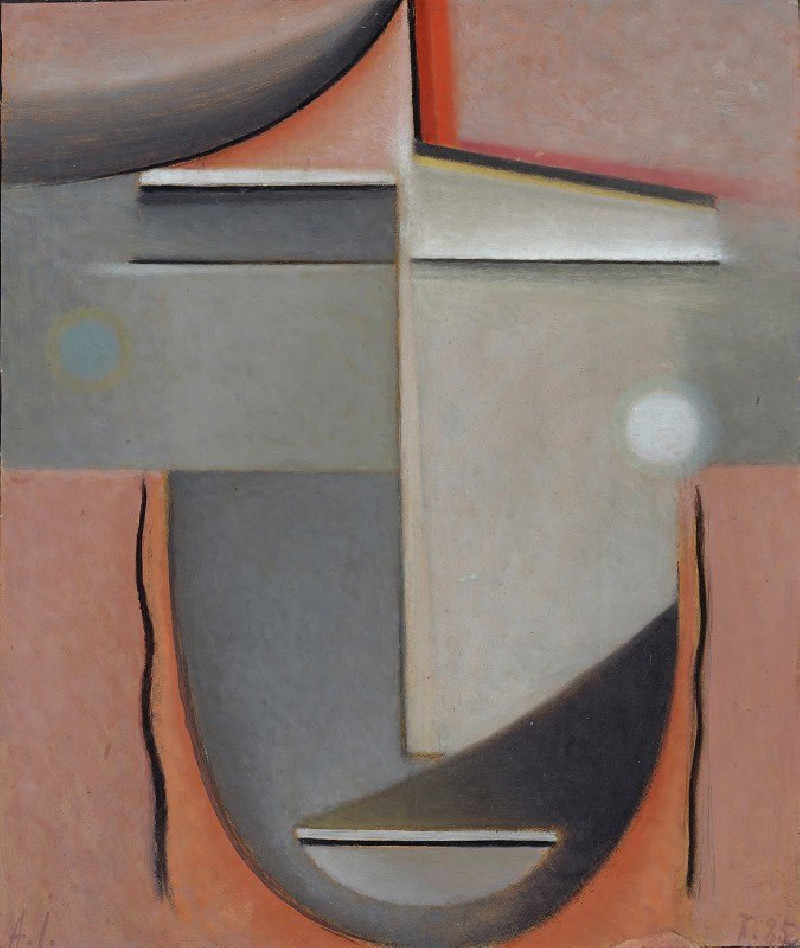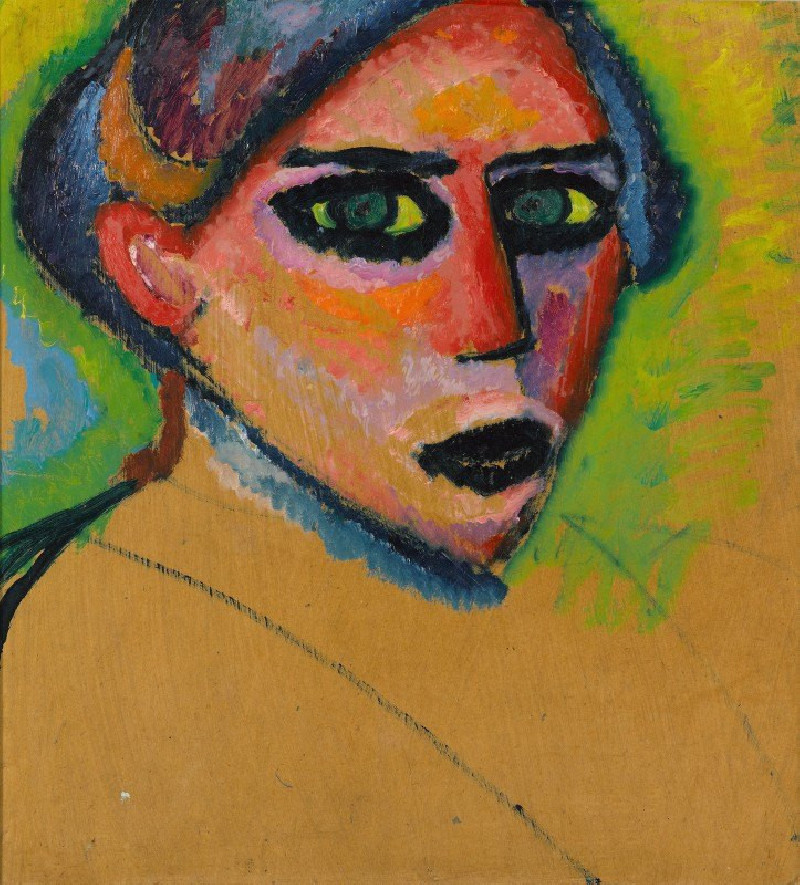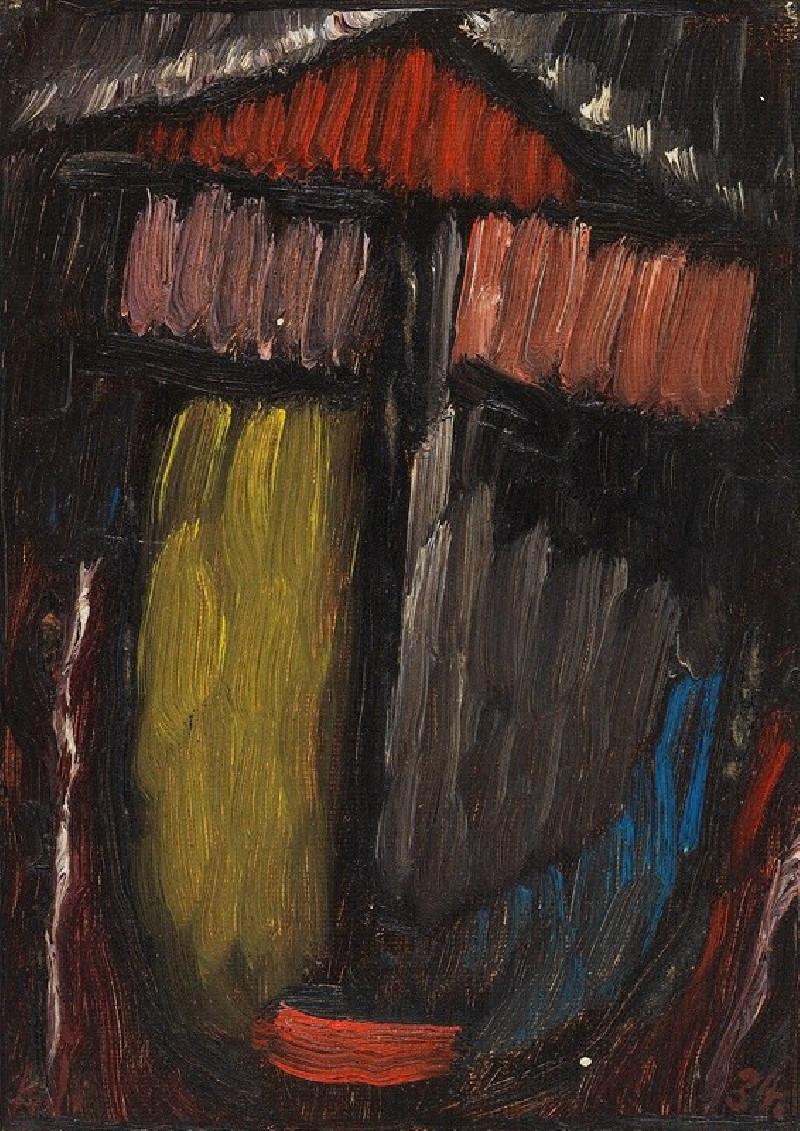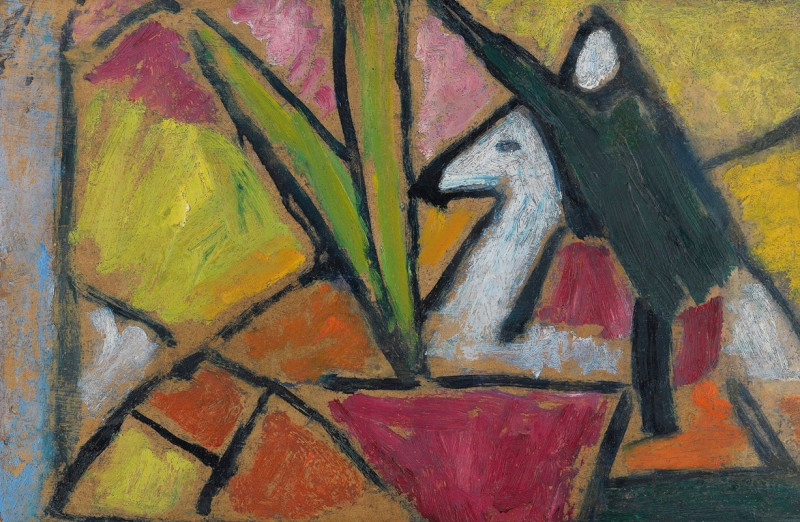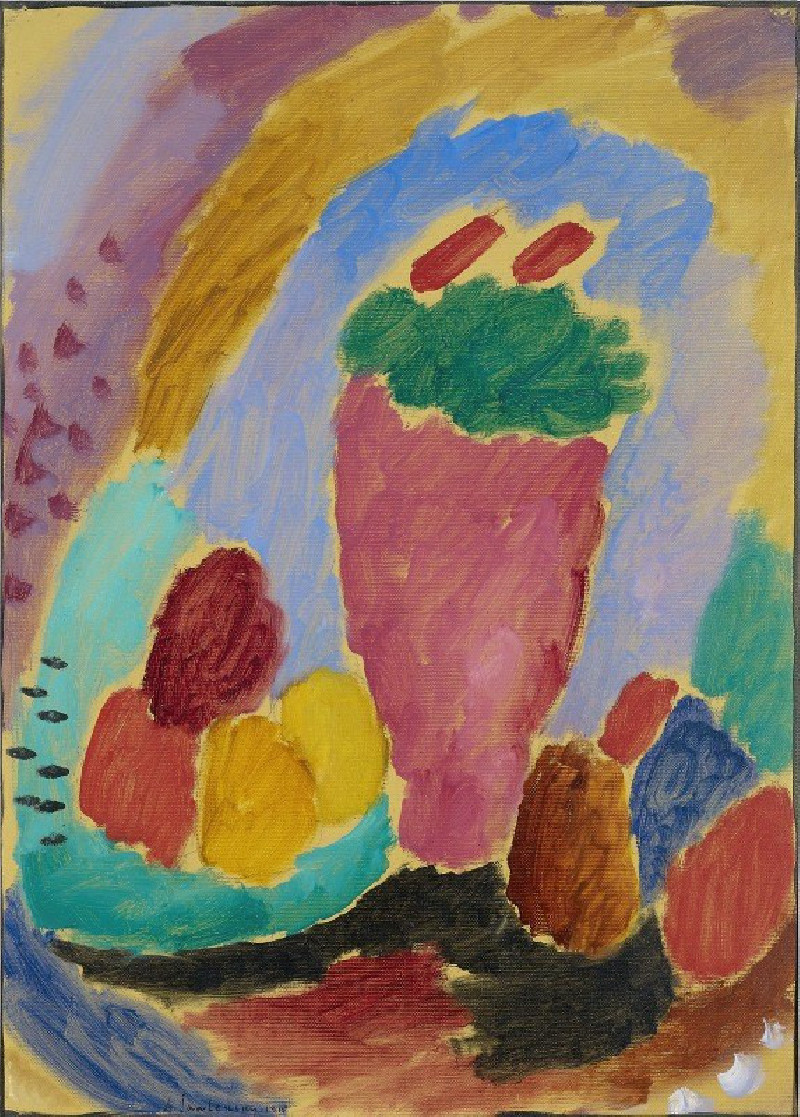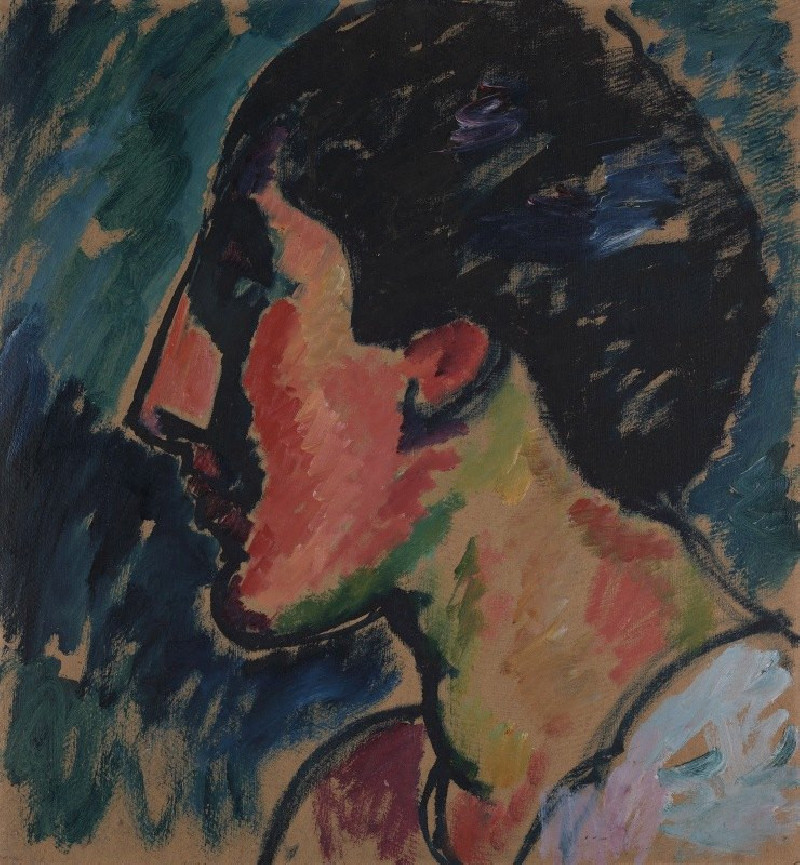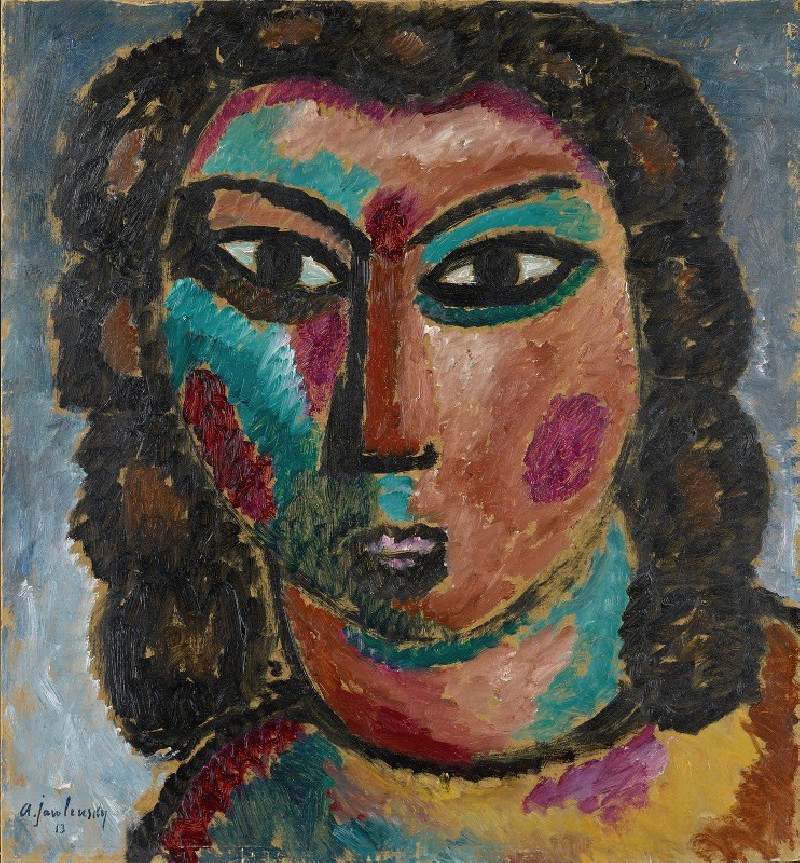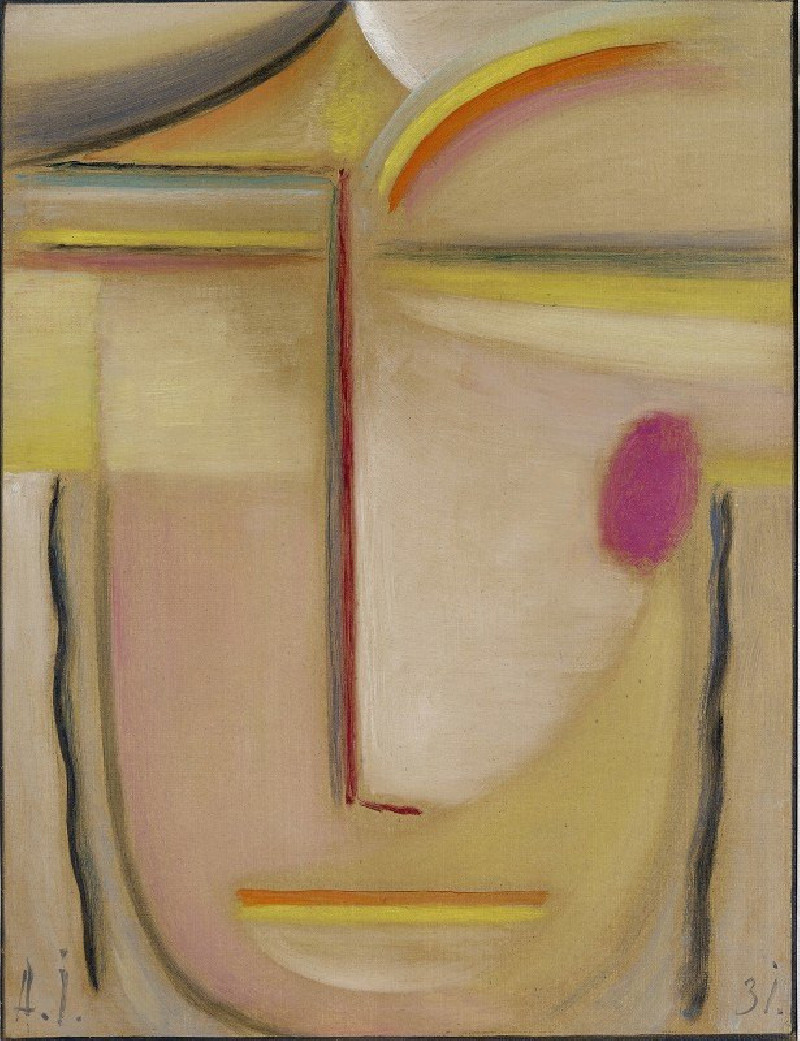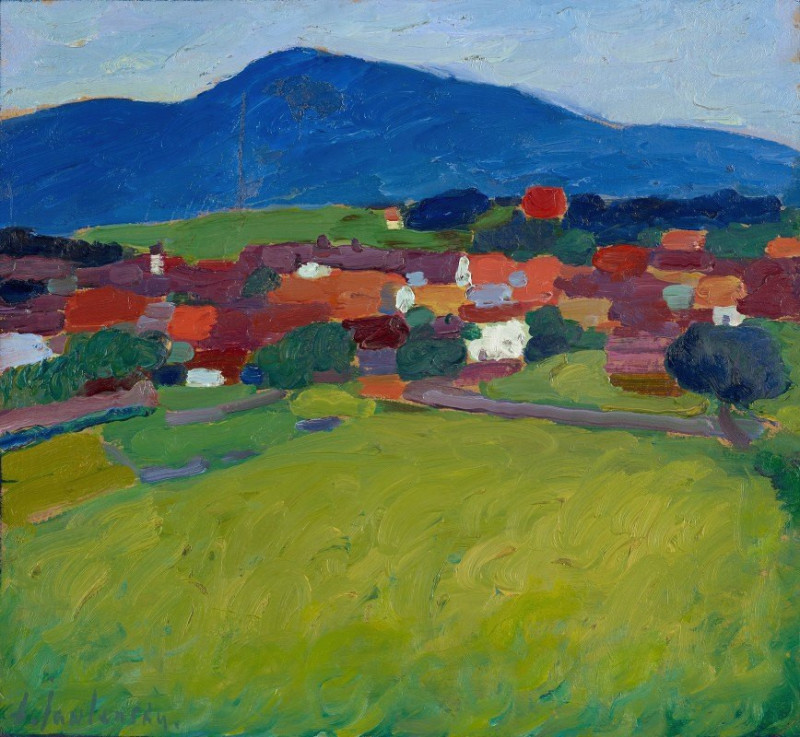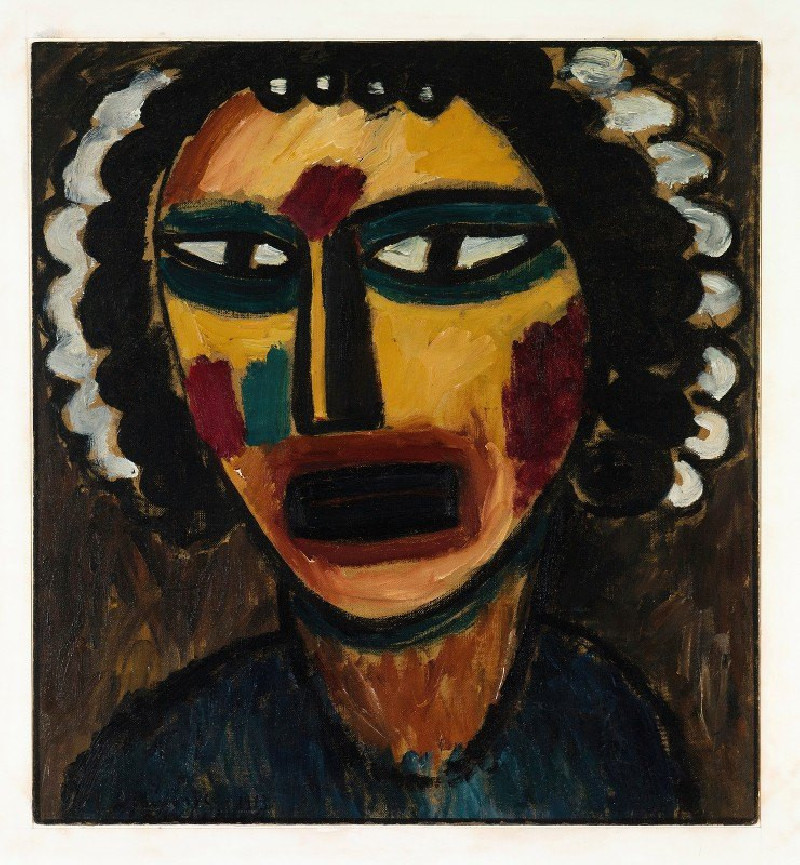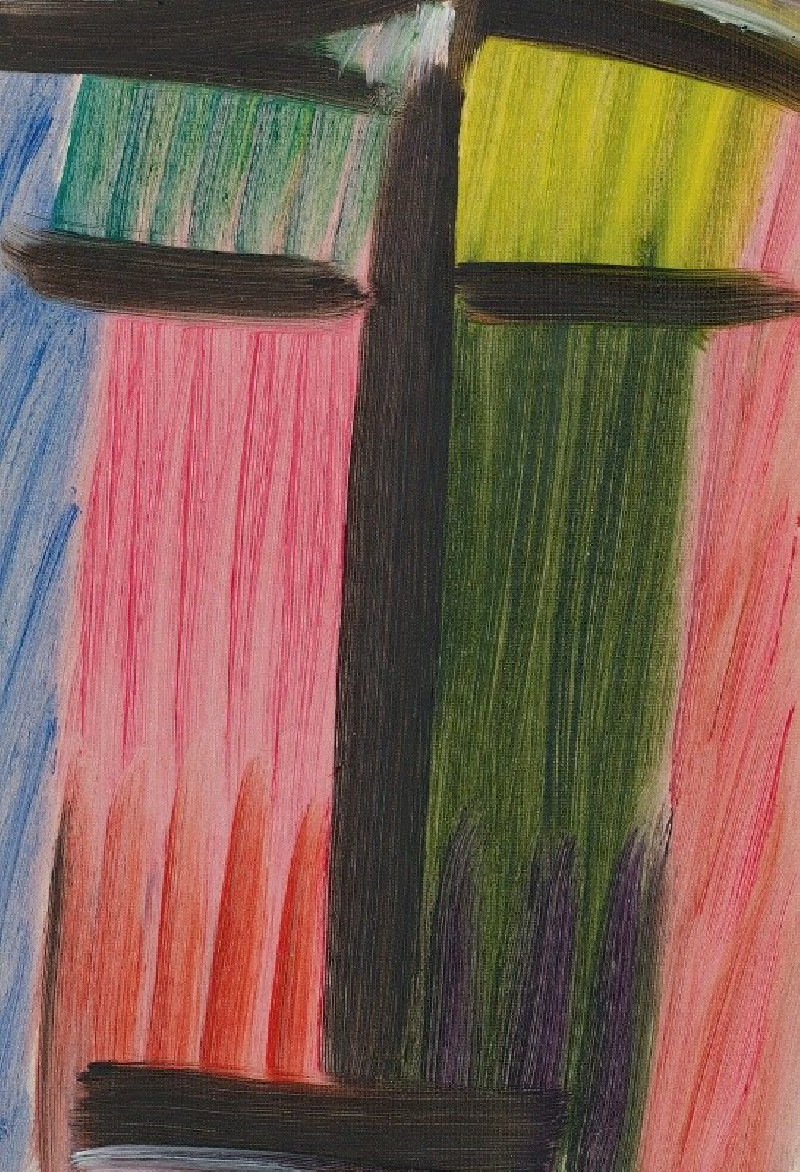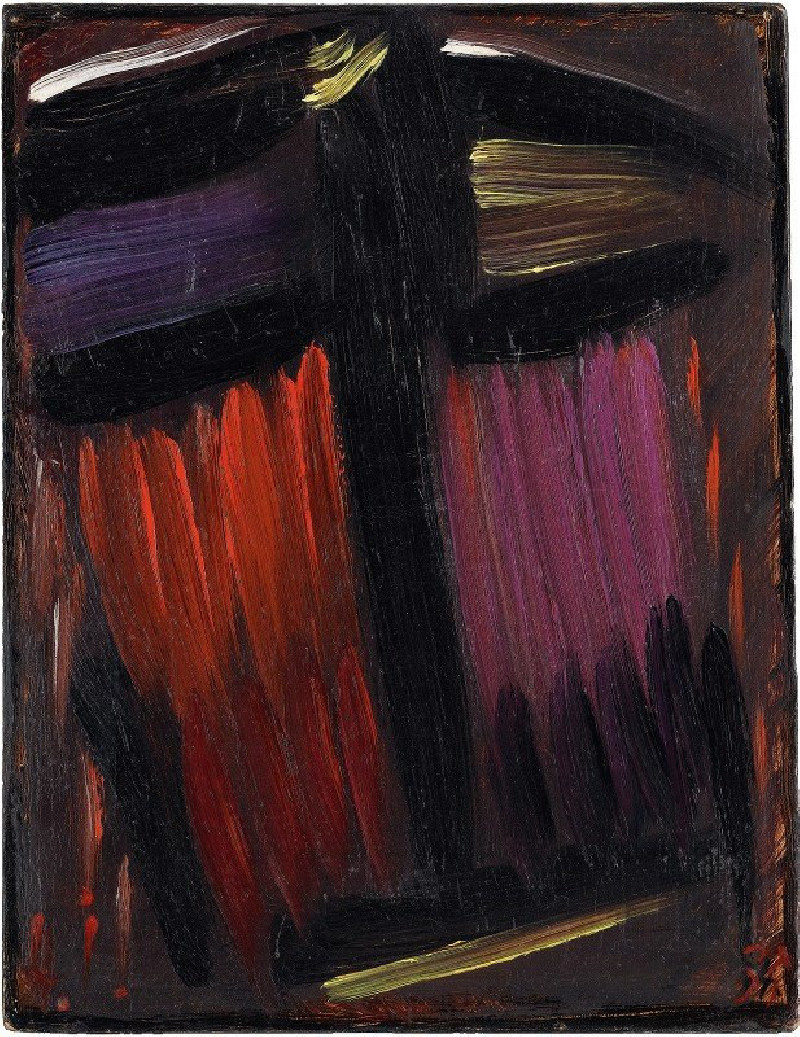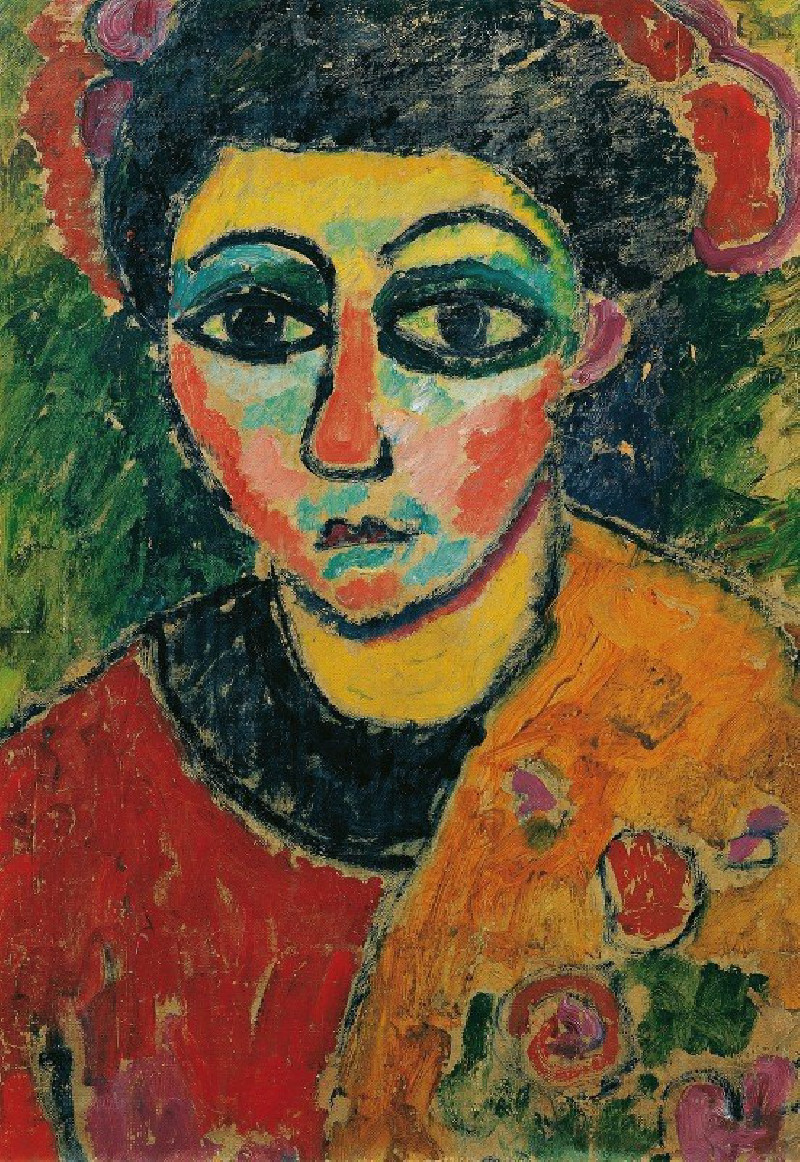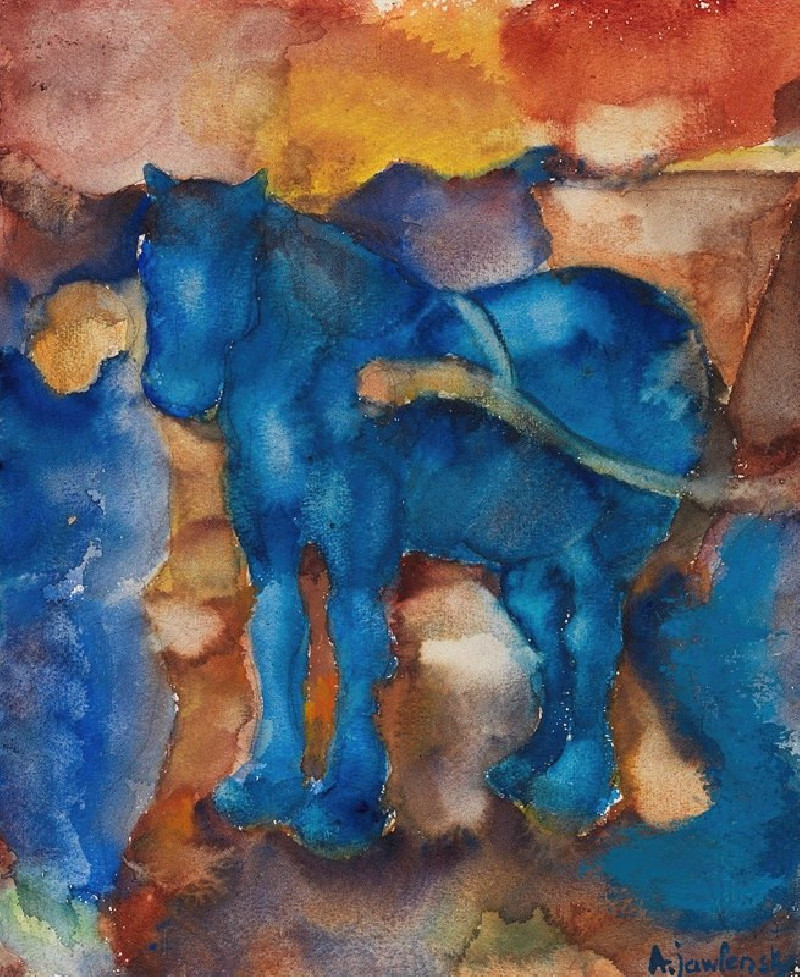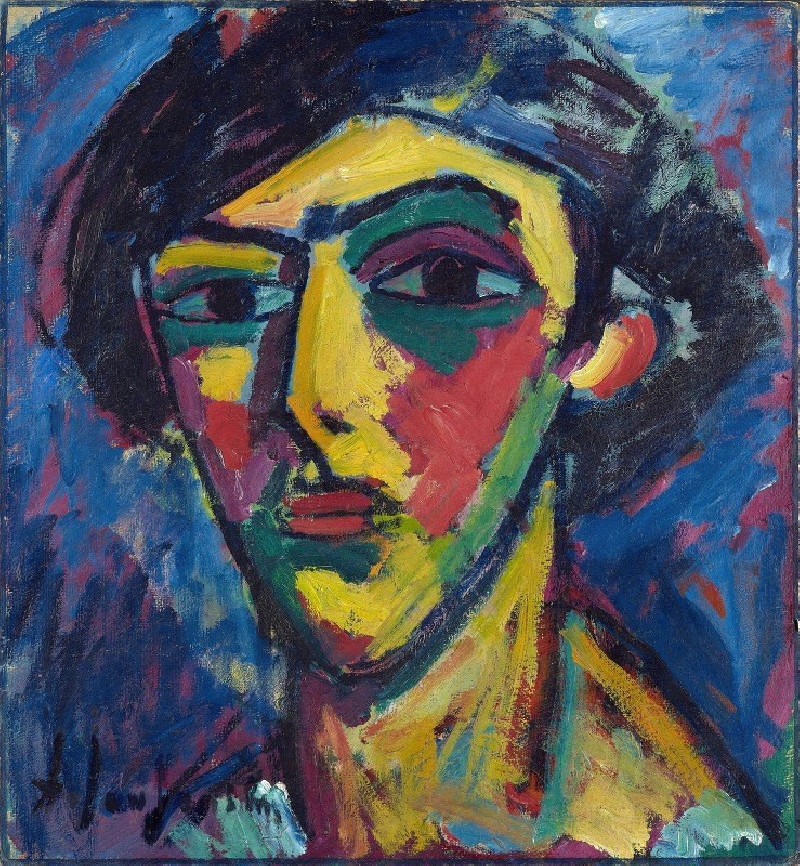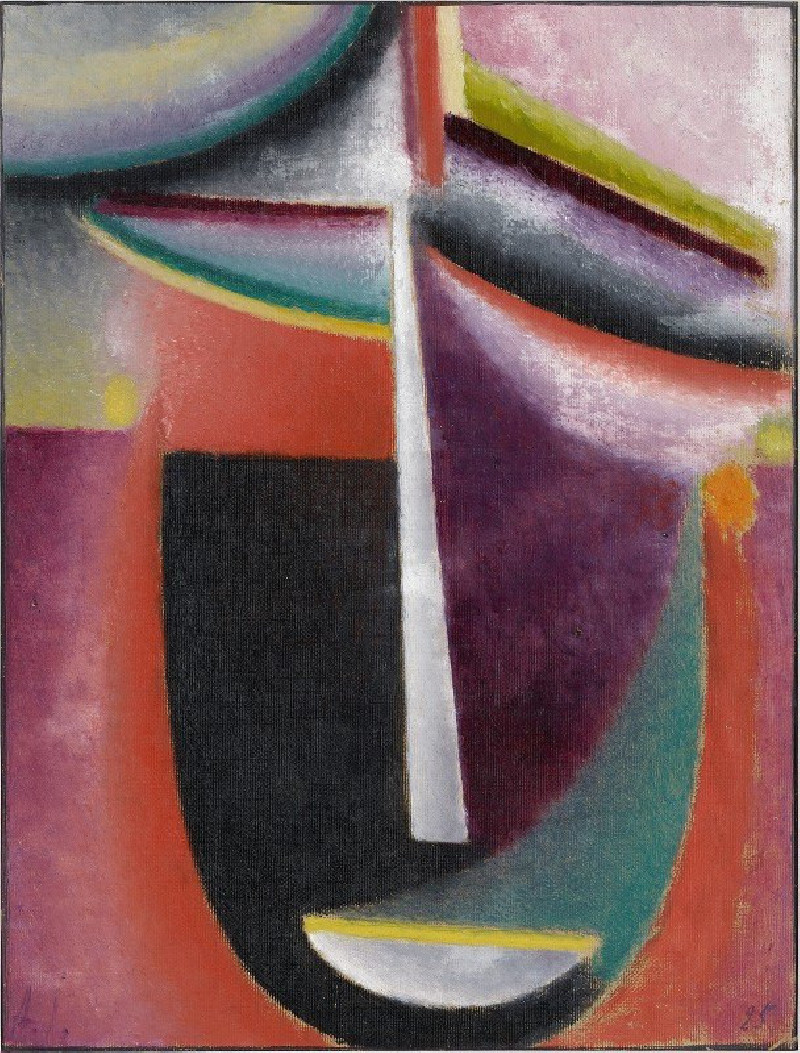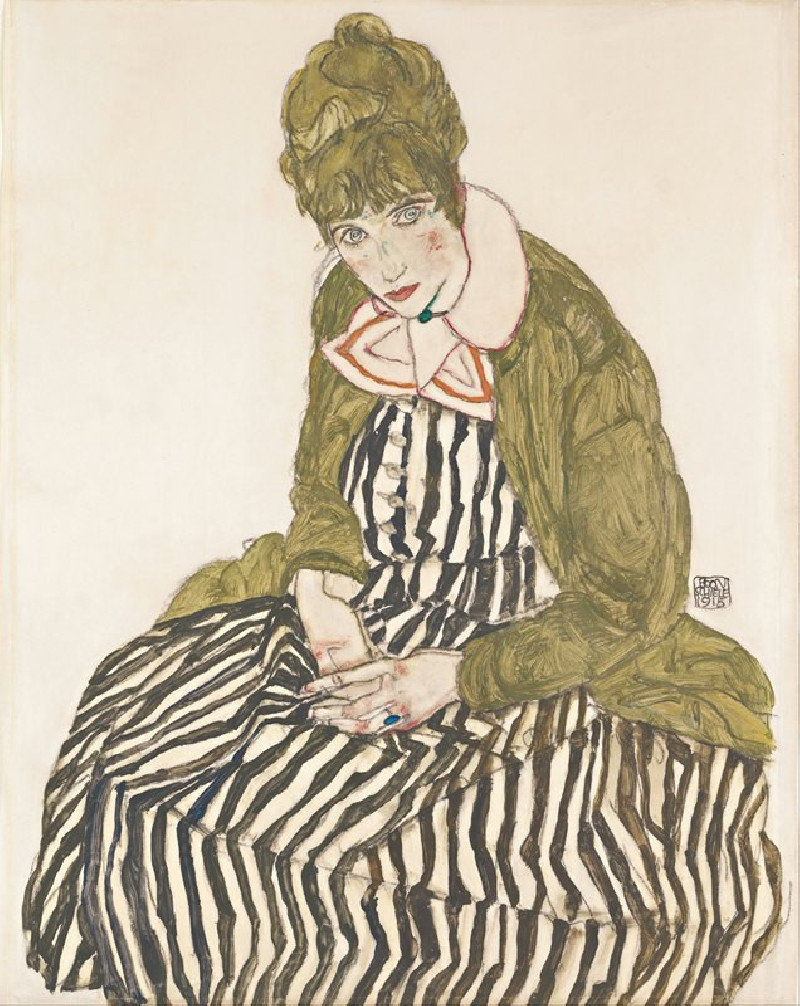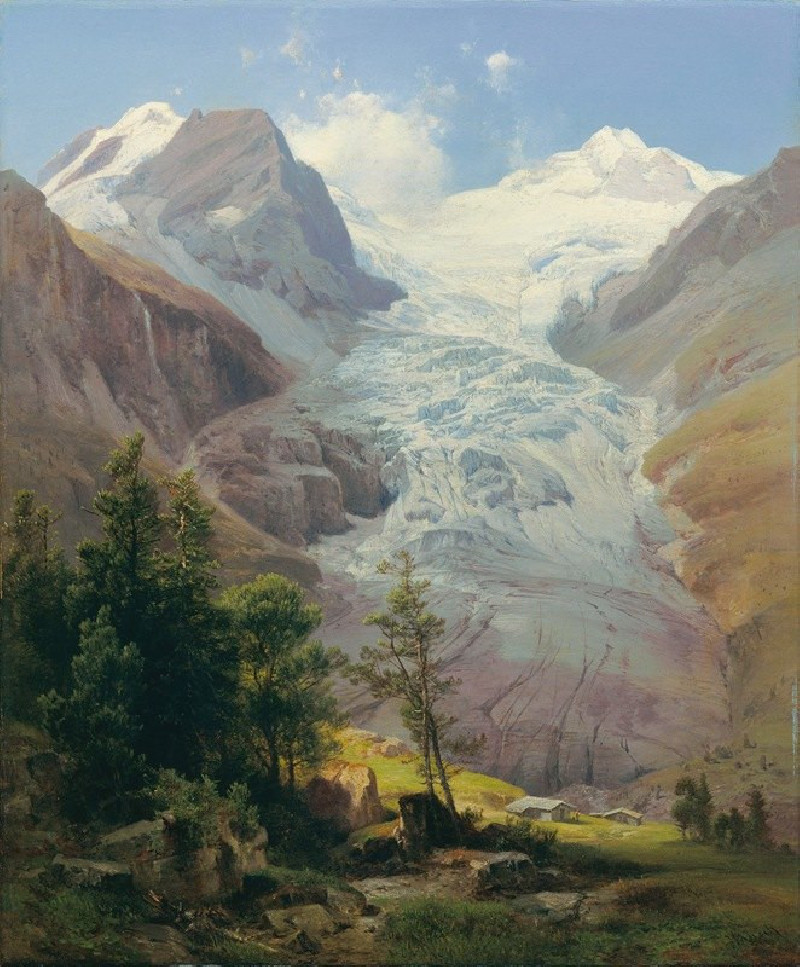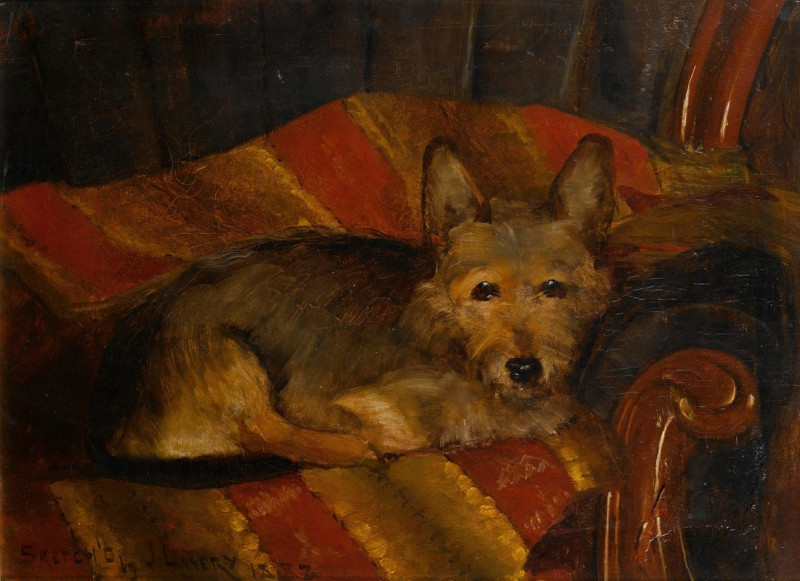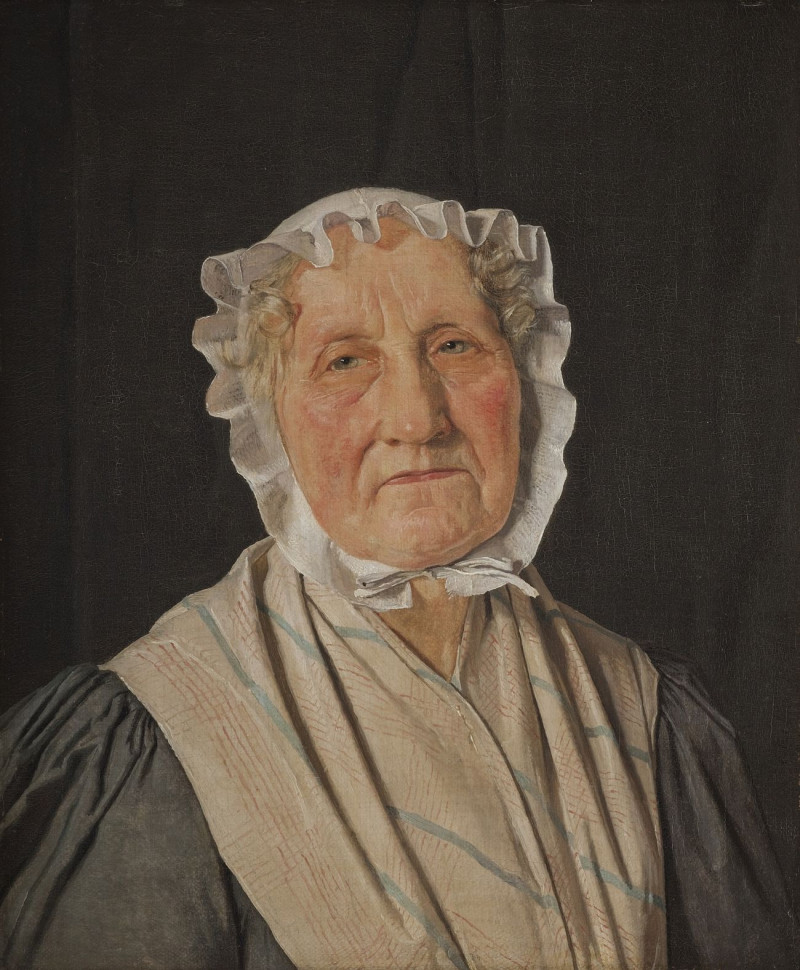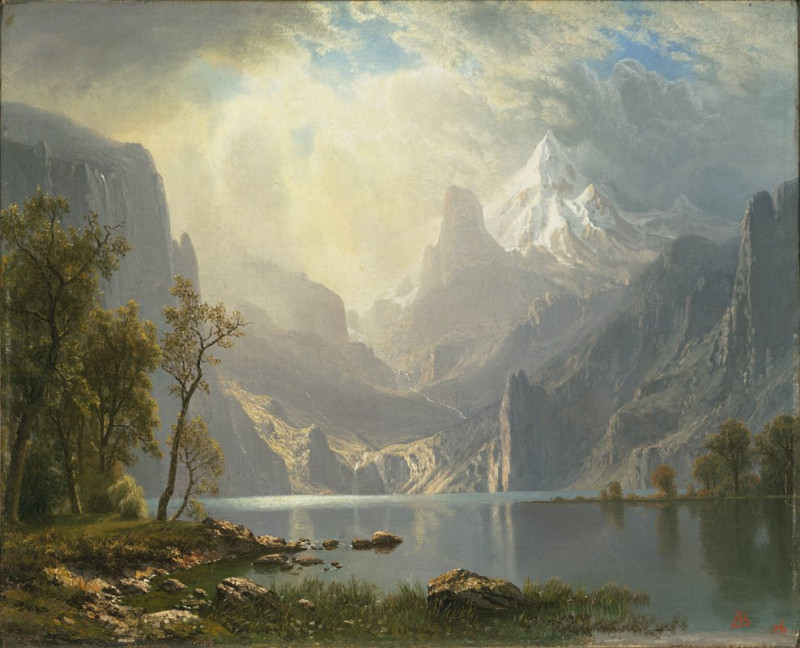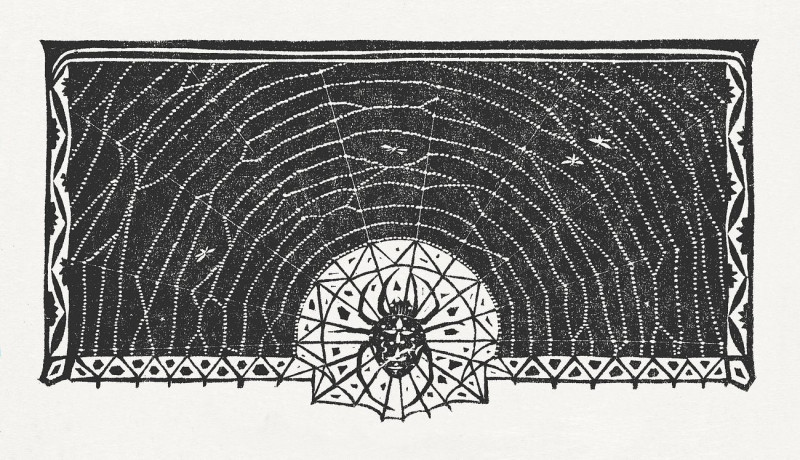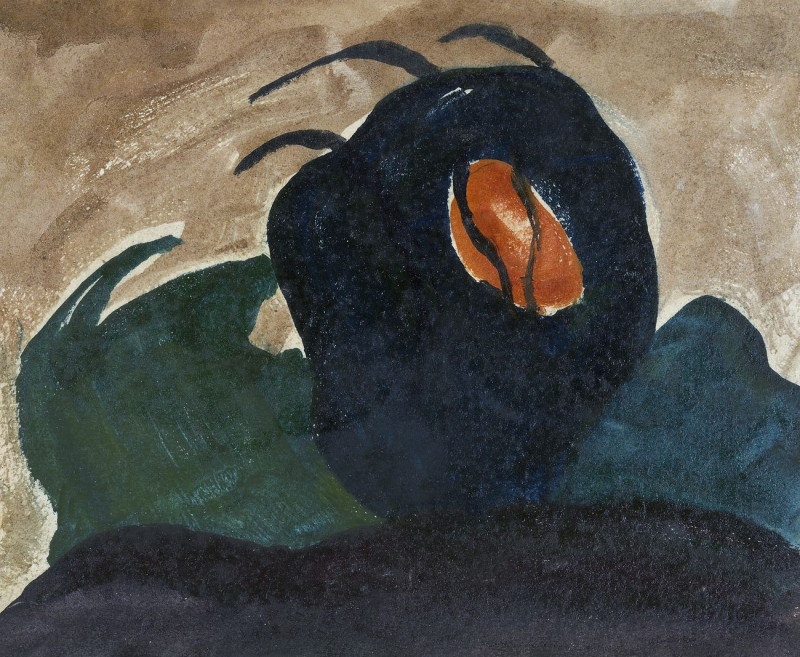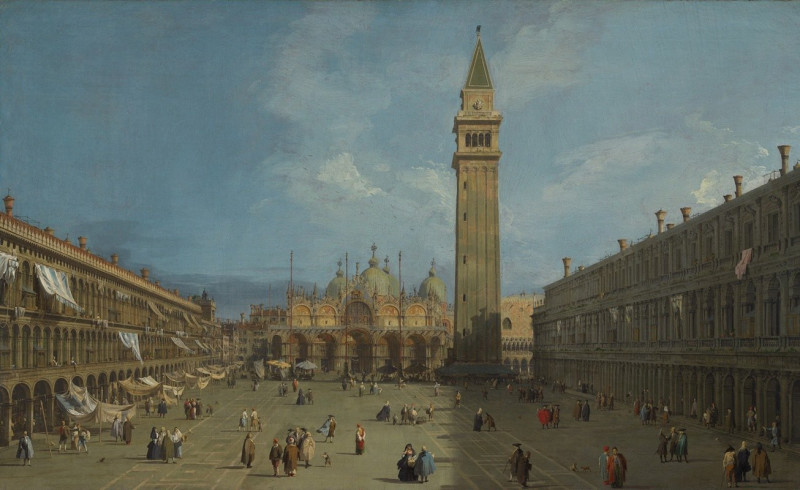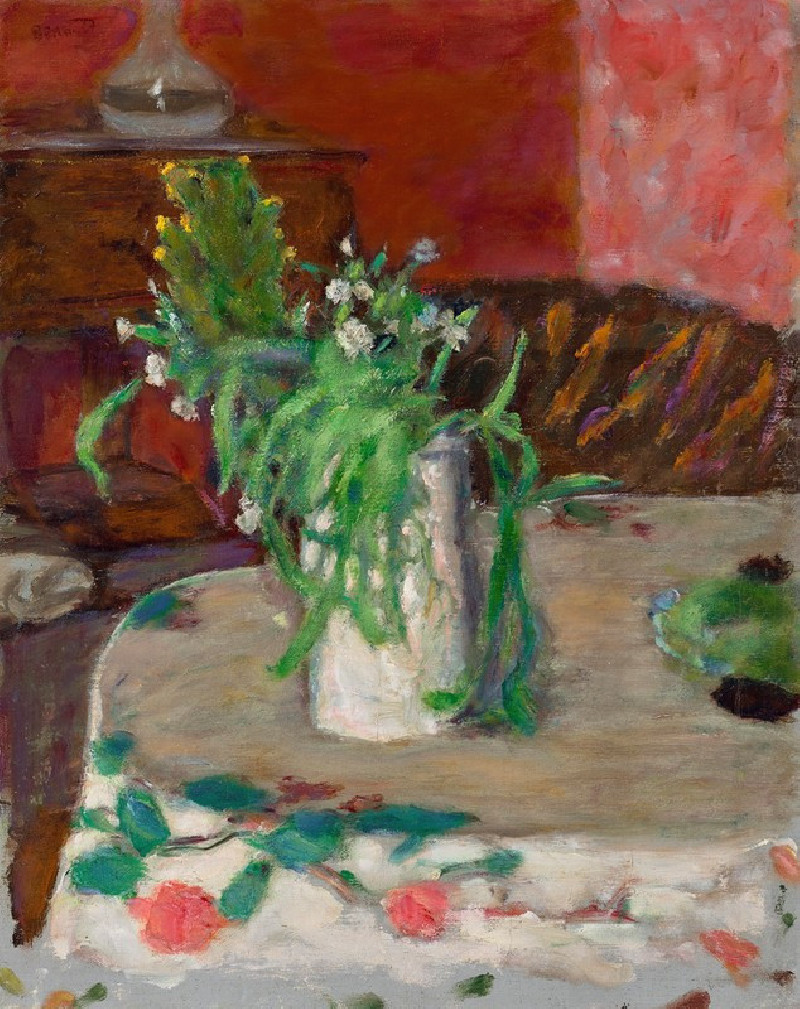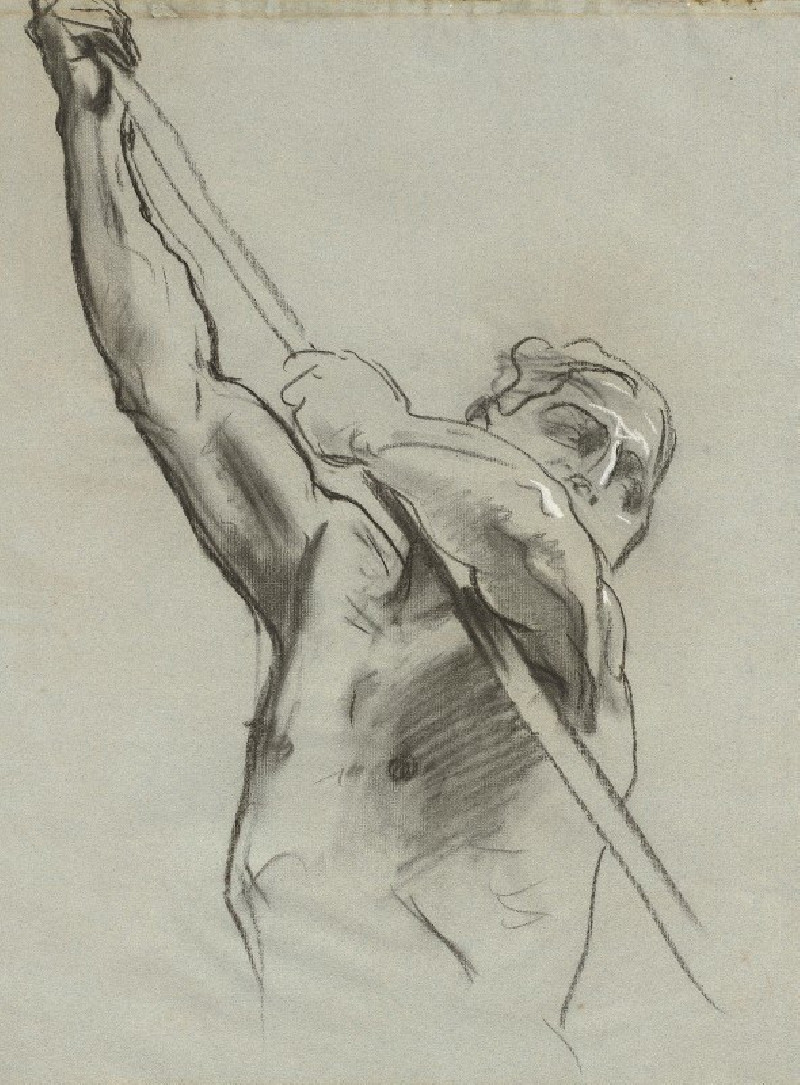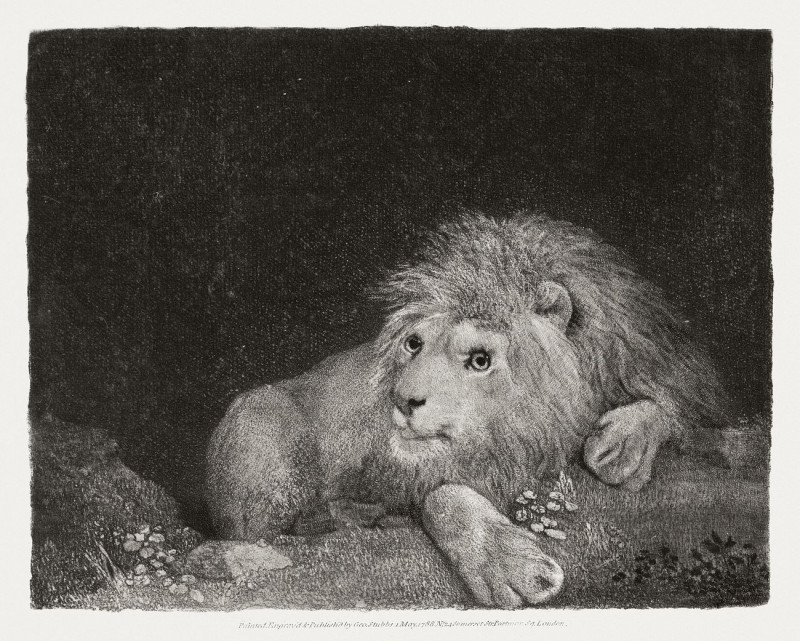Liebe (1925)
Technique: Giclée quality print
Recommended by our customers
More about this artwork
Dive into the enigmatic world of abstract expressionism with Alexej von Jawlensky's painting "Liebe" from 1925. This artwork invites the viewer into a thoughtful examination of form and emotion through an extraordinary use of color and composition.In "Liebe," Jawlensky abstracts the visual elements to their geometric essences. The painting is a carefully composed arrangement of shapes and colors that might initially seem random but are charged with expressive potential. The upper half of the canvas is dominated by a large, curvilinear form in a muted peach tone, which contrasts sharply with a smaller black and white geometric figure. Both of these forms add a thematic layering, suggesting complementary opposites—a theme that echoes throughout the painting.The lower region of the canvas showcases a dark arch-like shape that envelops a smaller, rouge-toned rectangle. Subtle elements like small circles and fine lines punctuate the artwork, enhancing the visual rhythm and leading the viewer's eye across the painting.Notice the play of soft pastel backgrounds against the starkly defined borders of the shapes. This interplay creates a visual tension that is both harmonious and dissonant, reflecting the complexities of the theme of love—which can be inferred from the title "Liebe," the German word for love.Jawlensky's use of muted yet emotionally poignant colors alongside sharp geometric abstraction invites interpretation and introspection. This painting is not only a representation of the artist's inner feelings but also an invitation to the viewers to reflect on their own experiences of love and emotion.
Delivery
Returns
Alexej Georgewitsch von Jawlensky (13 March 1864 – 15 March 1941) was a Russian expressionist painter active in Germany. He was a key member of the New Munich Artist's Association (Neue Künstlervereinigung München), Der Blaue Reiter (The Blue Rider) group and later the Die Blaue Vier (The Blue Four).

